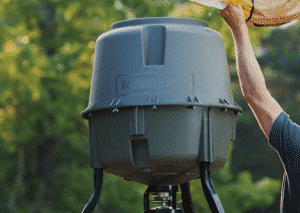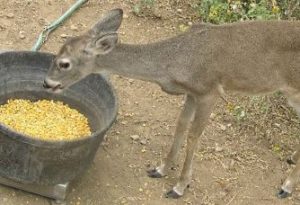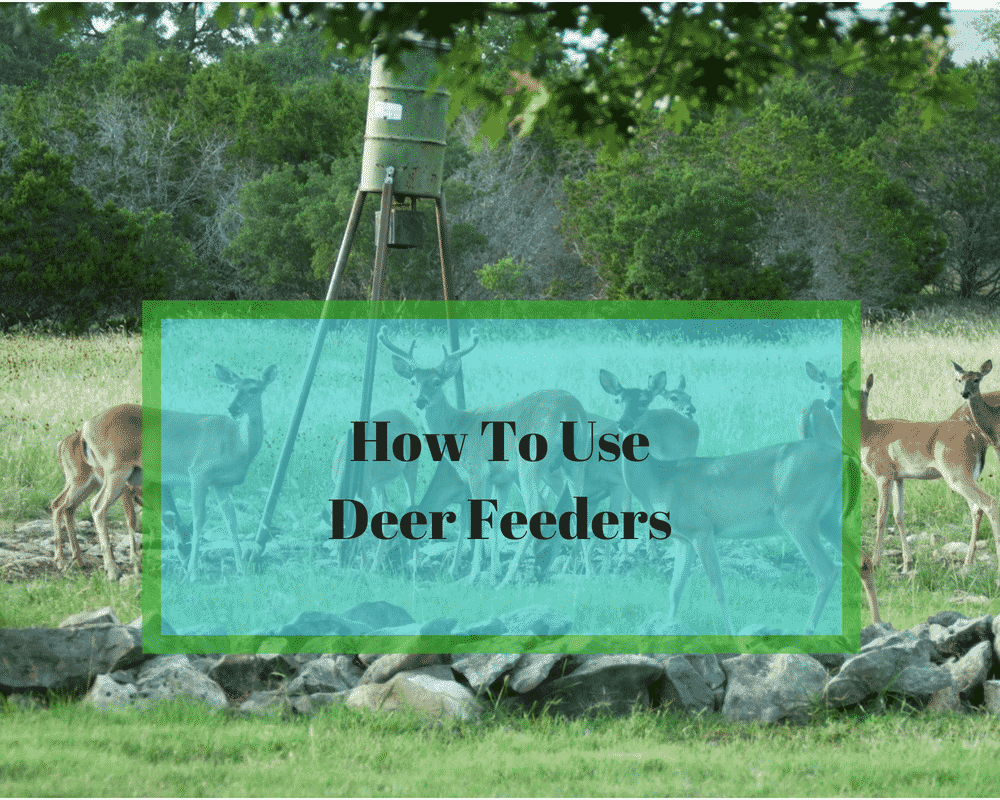Whether you’re a hunter, wildlife enthusiast or just plain old animal lover nothing will fill your backyard with wildlife like a deer feeder. Doesn’t matter if it’s just a wildlife feeder in your backyard or quarter acre food plot, feeders play an important role in any wildlife management plan. Available in a wide variety of sizes to suit anybody’s needs feeders are a cheap way to bring the wildlife into your own backyard. It might seem as simple as setting the feeder out and waiting for deer, but there are a few simple tips that will increase your odds of success.
Deer Feeding and Hunting Strategies
 Not every state allows hunting directly over bait so check your laws to see what’s actually legal. Even if your state doesn’t allow you to bait deer while hunting you can use feeders to attract deer to your property offseason. Having deer on your property is always a good thing because they’ll feel comfortable in the area even after the feeder is removed. For years I was using a few of these Cheap feeding stations throughout my property, but they always seemed to be empty. I was probably doing more harm than good driving my four wheel through the property for their weekly refill.
Not every state allows hunting directly over bait so check your laws to see what’s actually legal. Even if your state doesn’t allow you to bait deer while hunting you can use feeders to attract deer to your property offseason. Having deer on your property is always a good thing because they’ll feel comfortable in the area even after the feeder is removed. For years I was using a few of these Cheap feeding stations throughout my property, but they always seemed to be empty. I was probably doing more harm than good driving my four wheel through the property for their weekly refill.
In the past couple years I’ve switched to an automatic feeder like this Moultrie Tripod Feeder there are also bigger ones available that you won’t have to refill. It’s actually really cool that you can set it to feed deer at specific times throughout the day. You can actually see the deer start to appear when they know the timer is about to go off. The feeder should last about a month on a single fill and deer will continue to show up after it’s removed.
Where To Setup and Use a Deer Feeder?
If you’re in the research phase of buying a deer feeder you probably already have a spot picked out in the back your mind. Whether or not that spot is a good idea will come down to how much you know about deer. So what makes a good spot for a deer feeder? It’s easier said than done but you’re going to have to go where the deer are.
Try and find high-traffic areas that are sure to bring around a lot of local wildlife. Anywhere that would make a good spot to set up a hunting stand will probably be great with a feeder. Look for funnels, water, bedding areas, large open fields and general heavy cover. I typically like to ask myself the five following questions before setting up a food plot.
- Does it work with my hunting strategy?: Everybody’s hunting strategy varies, so there’s no right or wrong answer. Any place that you’ve eyed for a deer stand will probably be good for a food plot. You should be looking for high traffic areas that naturally draw in deer. Keep an eye out for water sources and natural bedding areas.
- Is it Easily Accessible?: If you can’t easily get to the area by pickup truck or atv you should cross it off your list. You might haul out your yard cart once by hand, but don’t think you’ll be that motivated once the snow falls.
- How Secluded is The Plot?: Human pressure will scare deer away from a food plot instantly. Keep it away from highways regularly used trails and property that backs up to public land. It’s hard to keep everybody out, but try your best to keep foot traffic down until hunting season.
- Is it close to natural Food and Water?: Without a local water source you have very little chance of actually bringing in a small deer population. Whether it’s a small stream, pond or just flooded mud you need to have some water available. If you don’t have any food natural food available that isn’t going to be much of a problem. Find a 1/4 acre of cleared property where you’d like to hunt and setup a food plot. For a few bucks you can buy enough oats, rye brassica and clover to cover a 1/4 acre. Setting up a food plot is as easy as tossing the seed on the ground(no tilling or excavation needed).
- How Close is it to Natural Bedding Areas?: Look for areas that offer enough cover to provide natural bedding areas. Deer almost always bed in heavy cover close to water and they like to stay close by(unless it’s during the rut). So setup your feeder anyplace you see natural signs of deer bedding areas.
When to Feed Deer?
 When you feed the deer is really going to depend on your local laws, but some states force you to remove your feeders at the start of hunting season. Other states simply don’t allow you to hunt directly over the feeder and will allow it to be elsewhere on your property. Just make sure you look up your laws in advance and plan accordingly.
When you feed the deer is really going to depend on your local laws, but some states force you to remove your feeders at the start of hunting season. Other states simply don’t allow you to hunt directly over the feeder and will allow it to be elsewhere on your property. Just make sure you look up your laws in advance and plan accordingly.
It really doesn’t matter when you set out your feed deer will find it, but that doesn’t mean you’ll get that monster buck. If all you did was dump out bag of corn in the middle of field in the beginning of September you would have does there in a day or two. Can’t really mess it up, but if you want big mature bucks you’ll have to plan a little early. Most of the time I’ll set up my full size tripod feeder at the beginning of summer because it will take him a little while to get used to it.
In less you want to trample in and out of the forest every weekend you’re going to have to get a bigger feeder. I fill up my Moultrie Pro Magnum Feeder and check on it once a month until the hunting season. With a small feeder your constantly spreading your scent around which is guaranteed to scare off big mature bucks.
Check To See if Deer Feeders are Legal in Your State?
Deer feeders are easy to set up and will significantly help the local deer population if done properly. The issue you have is misinformed nature lovers that are trying to help without knowing what’s best for the animal. The old-school train of thought was to just throw in a couple hundred pounds of corn and call it a day, but that often does more harm than good. There are a ton of negative outcomes that can come from improper feeding. You can spread disease throughout deer populations or cause an issue with overfeeding of corn. Always try and find a deer feed that includes approximately 20% protein. Disease and illness are the primary concern of most wildlife managers.

